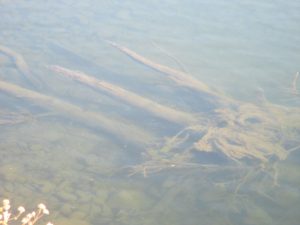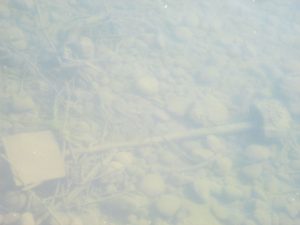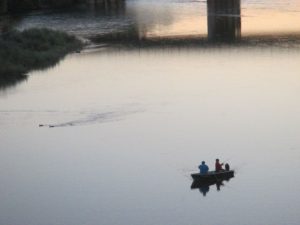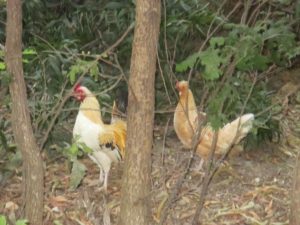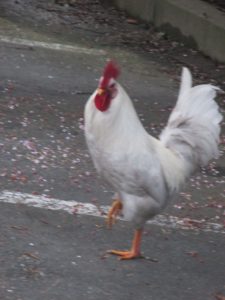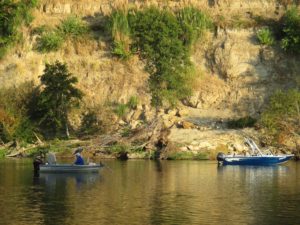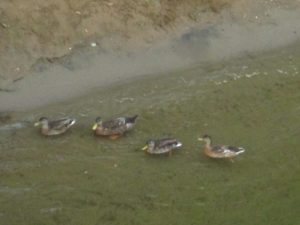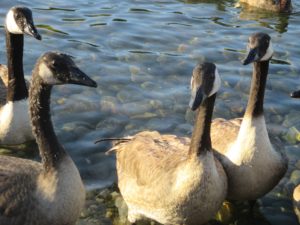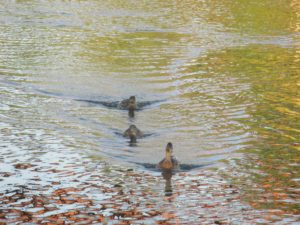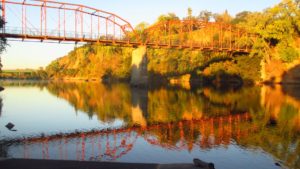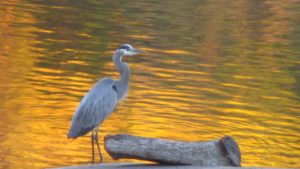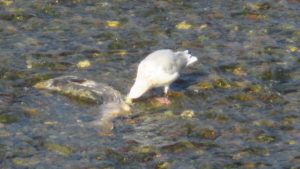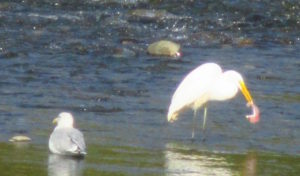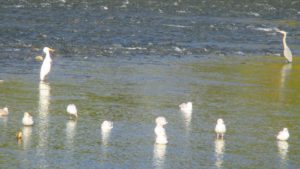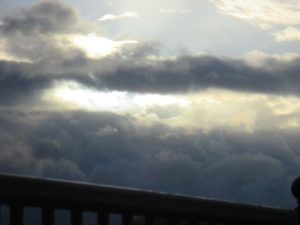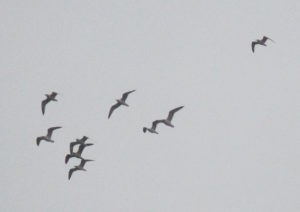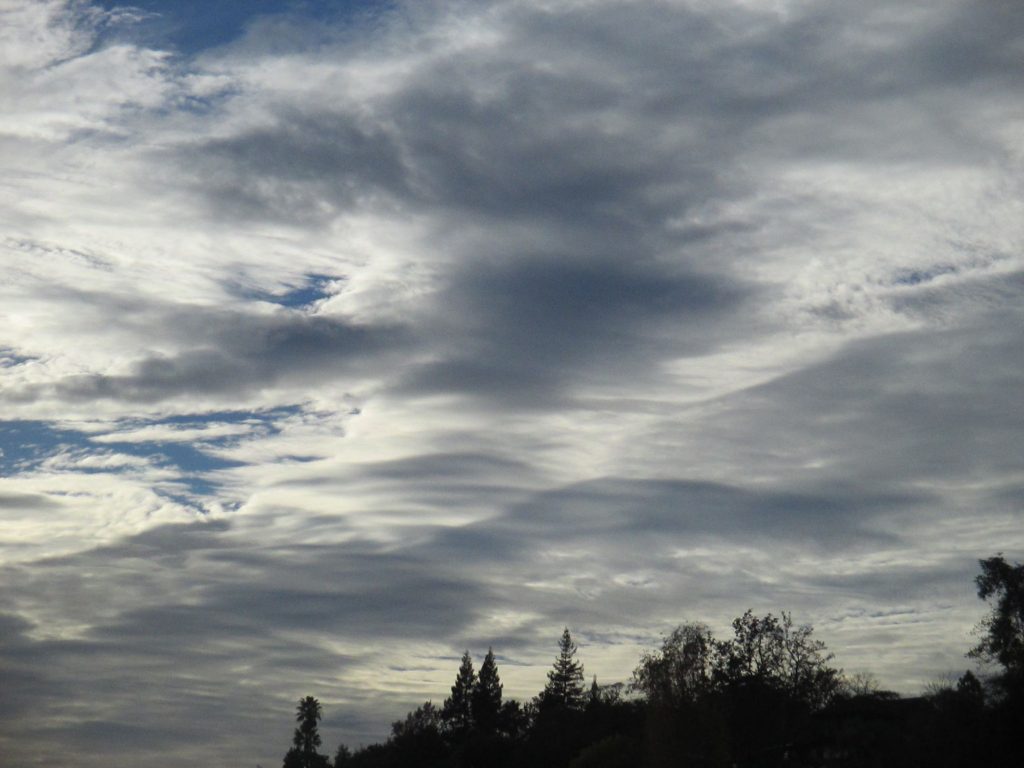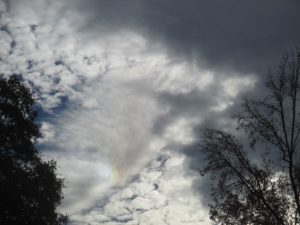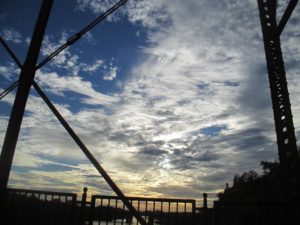Friday, August 11, 2017 845 am 68 degrees
Six Canada Geese greet me with a chorus of characteristic honks as I arrive at Jim’s Bridge by bike.
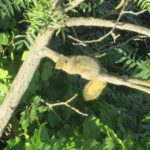
They join a dozen other ducks already scouting breakfast on the rocky shoreline. True to their nature the geese are late arrivals for the morning ritual. Squirrels are busy finding their breakfast in the trees.
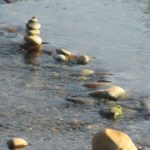
During a quick trip to the boat launch ramp, I see no waterfowl anywhere. No fishing boats sitting in the American River. Today I continue my ride east toward the Nimbus Fish Hatchery. This is the prime salmon spawning area come late September through early December. I used to see a dozen ducks bobbing in shallow rapids for food as I ride by. None today.
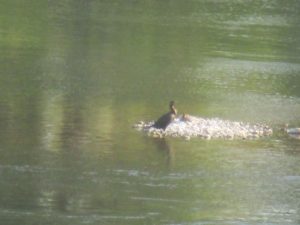
I arrive at the picnic area at the river’s edge, far off the bike trail, where last fall I saw 100 seagulls feasting on dead salmon. The small island located in the middle of the river channel that was big enough for fisherman to anchor their boats and stand alongside them in hip deep water is now two thin and barely visible stretches of rocks.
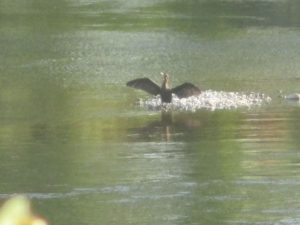 I spy a cormorant sitting on a rocky island hanging its wings to dry in the early morning air. It stands motionless for 10 minutes before flying away. I see ducks hide alongside green shrubbery of a nearby island jutting out from the western riverbank.
I spy a cormorant sitting on a rocky island hanging its wings to dry in the early morning air. It stands motionless for 10 minutes before flying away. I see ducks hide alongside green shrubbery of a nearby island jutting out from the western riverbank.
Except for an occasional distant quack from a lone duck, this area is quiet today. Here I am far away from homes hanging on the Fair Oaks Bluffs, traffic and people congregating on shorelines. I hear a distant hum from another roadway bridge alongside the fish hatchery, less than a mile and completely out of sight.
With no homes on the opposite shore, I see a mix of oaks, shrubs and grasslands. I could say they are in a natural and undisturbed state. Little along the river channel was left untouched during winter floods. Remnants are still visible everywhere along the river.
